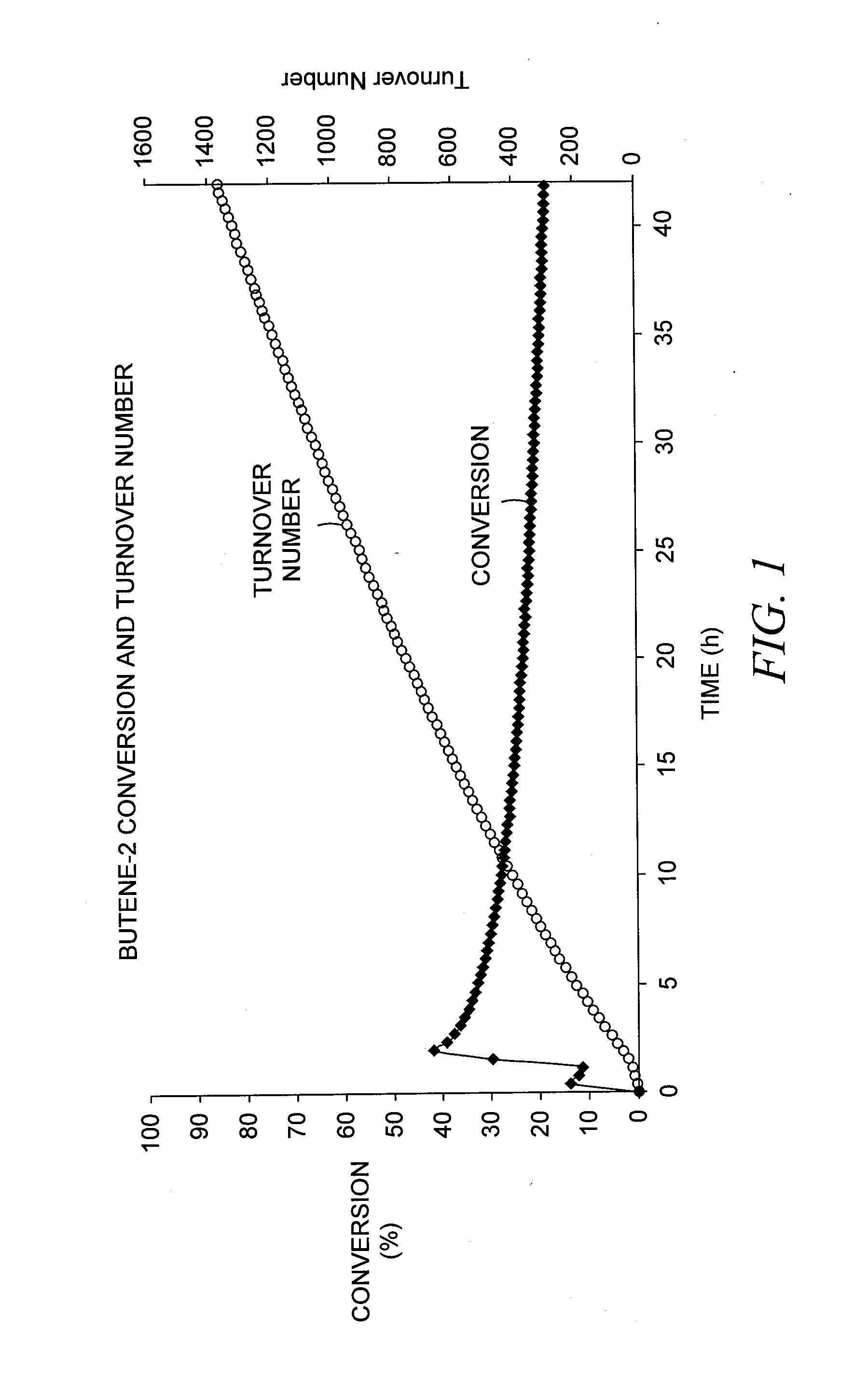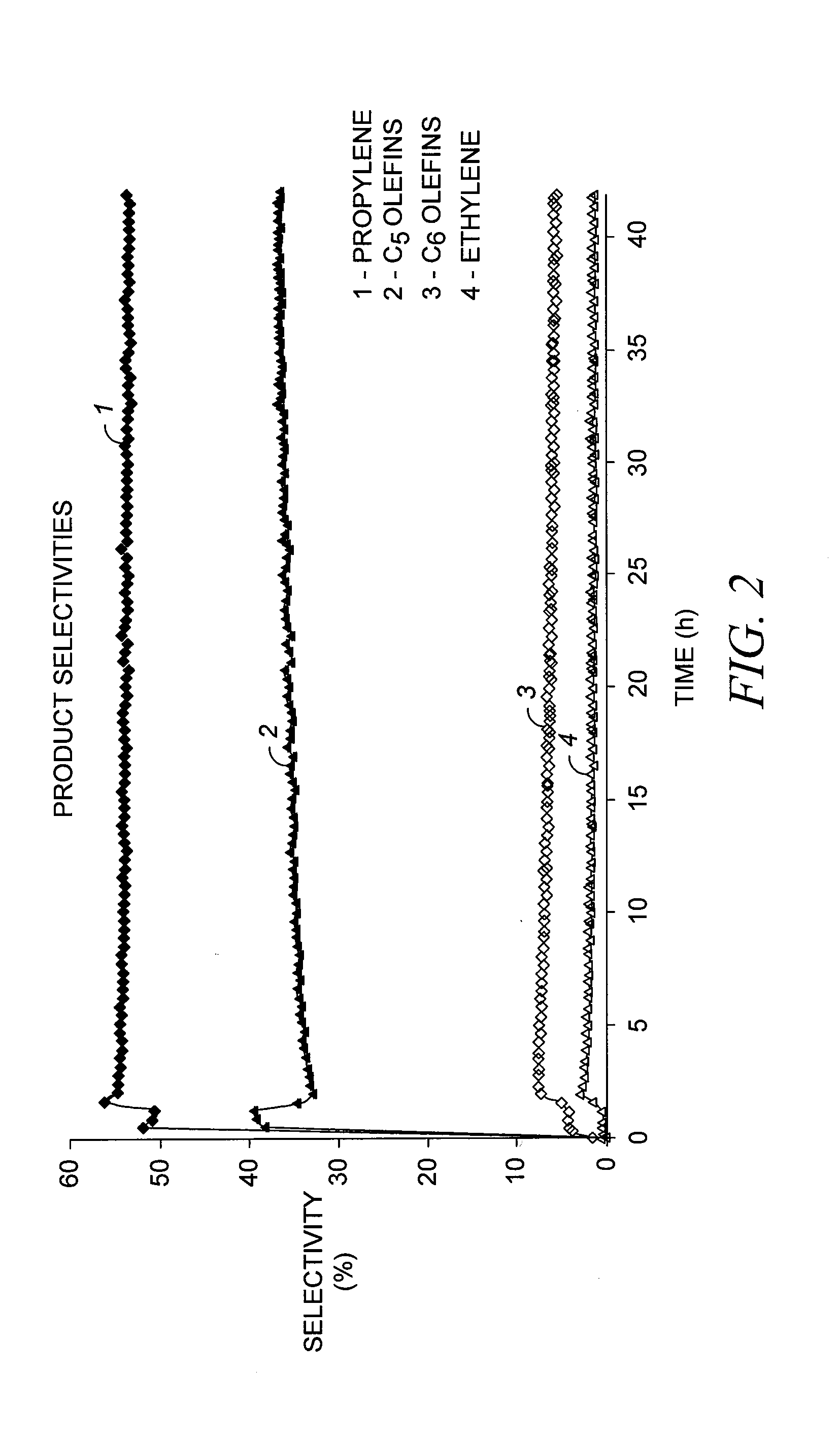Conversion of Acyclic Symmetrical Olefins to Higher and Lower Carbon Number Olefin Products
a technology of symmetrical olefins and products, applied in the field of conversion of symmetrical olefins, can solve the problems of insufficient propylene to meet the worldwide demand, steam cracking involves a very complex combination of reaction and gas recovery systems, and achieves the effect of improving the overall economics of propylene production from butylene and being less expensiv
- Summary
- Abstract
- Description
- Claims
- Application Information
AI Technical Summary
Benefits of technology
Problems solved by technology
Method used
Image
Examples
example 1
Conversion of Butene-2 to Propylene and Other Products with W—H / Al2O3 Catalysts
[0073]A solid catalyst comprising a tungsten hydride grafted (bonded) to alumina was prepared as described in Example 3 of US 2007 / 0129584. The alumina used in this case was Aeroxide® Alu C (Evonik Degussa GmbH, Essen, Germany), having a surface area of 125 m2 / g. The tungsten content of the catalyst was 3.0 wt-%, based on the total catalyst weight. The catalyst was evaluated, according to a microreactor-scale experimental protocol, for the production of propylene and other products from a pure butene-2 feedstock under conditions generally favorable for olefin metathesis. In particular, butene-2 was passed over a 150 mg sample loading of the catalyst at a temperature of 150° C. (302° F.) and a flow rate of about 7.6 Nml / min, corresponding to a weight hourly space velocity (WHSV) of about 7 hr−1. These conditions and 1 barg (15 psig) were maintained over a testing duration of about 45 hours.
[0074]The reacto...
PUM
| Property | Measurement | Unit |
|---|---|---|
| temperature | aaaaa | aaaaa |
| pressure | aaaaa | aaaaa |
| weight | aaaaa | aaaaa |
Abstract
Description
Claims
Application Information
 Login to View More
Login to View More - R&D
- Intellectual Property
- Life Sciences
- Materials
- Tech Scout
- Unparalleled Data Quality
- Higher Quality Content
- 60% Fewer Hallucinations
Browse by: Latest US Patents, China's latest patents, Technical Efficacy Thesaurus, Application Domain, Technology Topic, Popular Technical Reports.
© 2025 PatSnap. All rights reserved.Legal|Privacy policy|Modern Slavery Act Transparency Statement|Sitemap|About US| Contact US: help@patsnap.com



